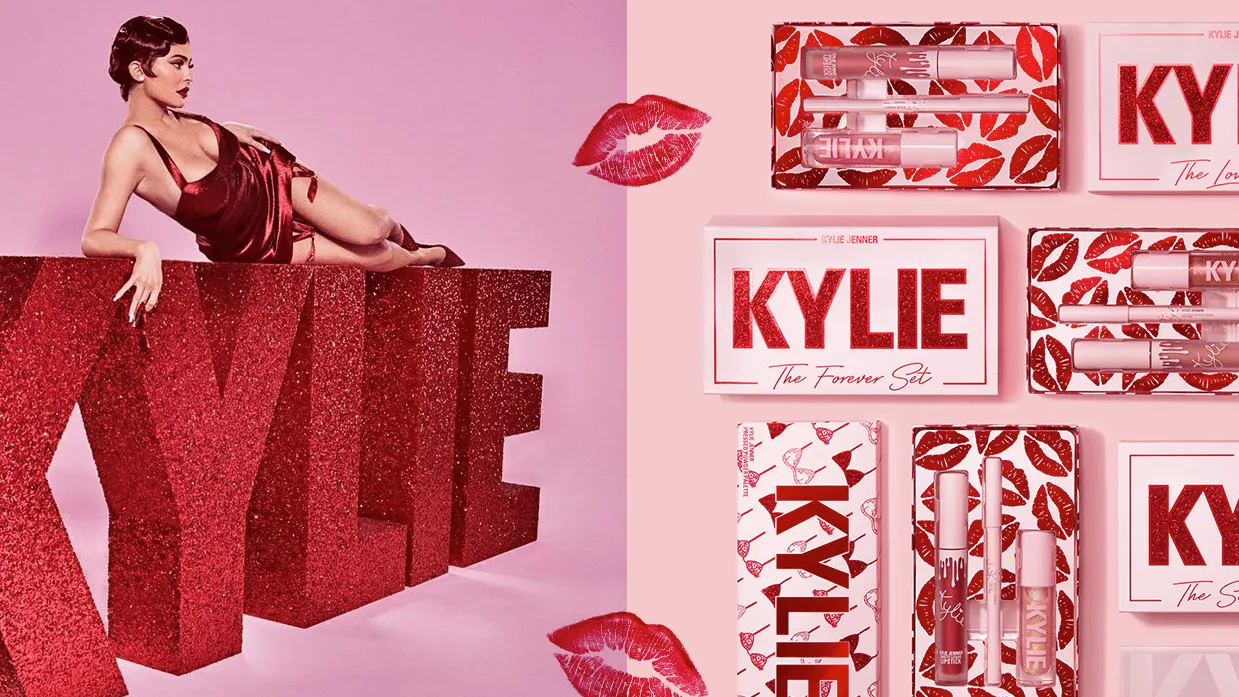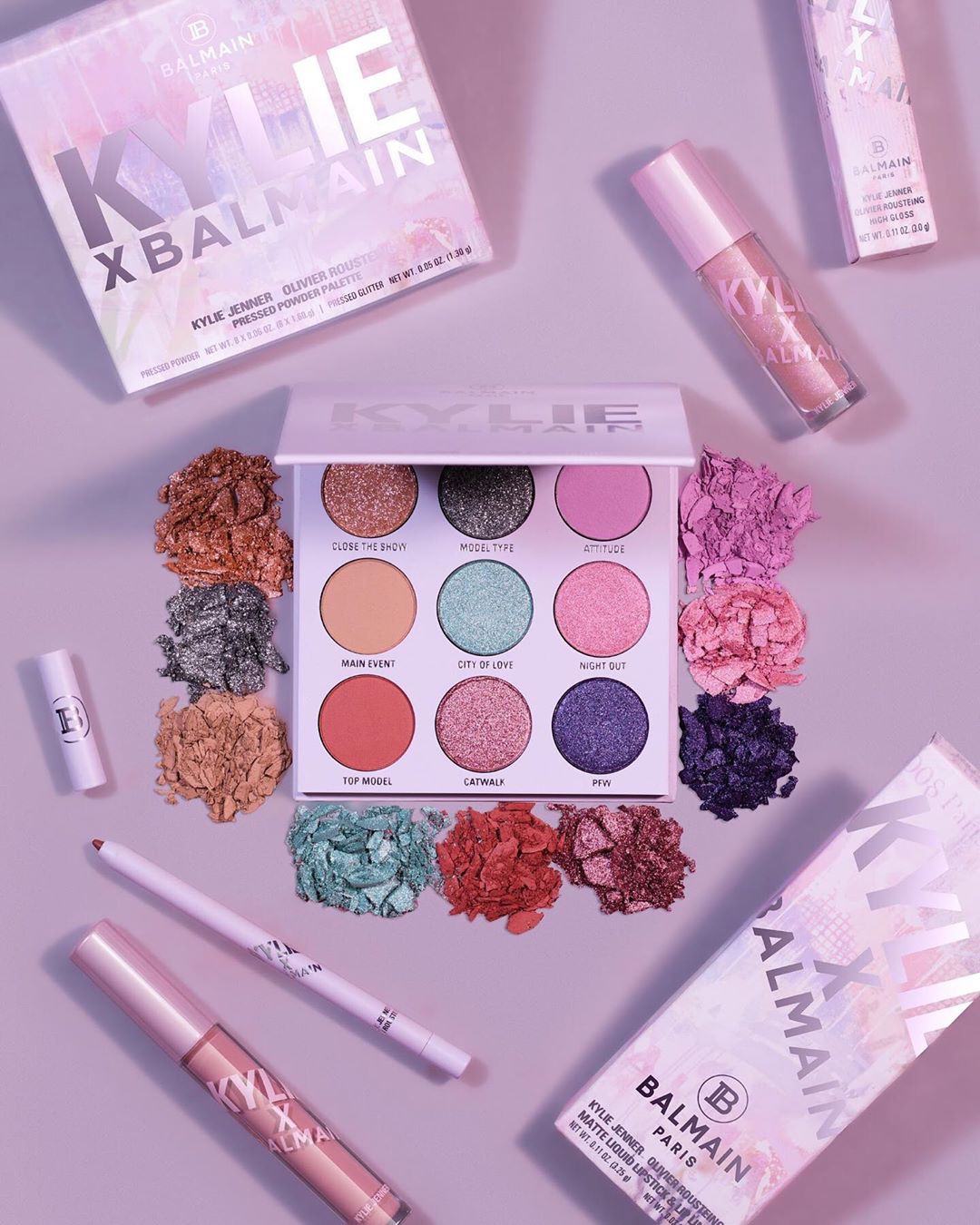Kylie Cosmetics Net Worth, Revenue, Growth Strategies, and Insight for eCommerce business

Kylie Cosmetics has become a powerhouse in the beauty industry, leveraging social media, influencer marketing, and strategic retail partnerships to drive impressive growth. From skyrocketing revenue to evolving market challenges, the brand’s journey offers valuable lessons for e-commerce businesses. This analysis dives into Kylie Cosmetics net worth, revenue trends, and growth strategies—unpacking key insights that can help online brands scale, adapt, and thrive in an ever-changing market. Explore now!
>> Recommended reading:
- Fashion Nova Net Worth, Revenue and Business Model Analysis
- Fashion Nova Black Friday Strategy: Statistic And Key Take Away For Success
- Gymshark Net Worth, Revenue and Business Model analysis
Kylie Cosmetics overview
Kylie Cosmetics, founded by Kylie Jenner in 2015, has become a transformative force in the beauty industry, leveraging the founder’s celebrity influence and innovative marketing strategies. The brand initially gained traction with its iconic Lip Kits, which sold out within minutes of launch, setting the stage for rapid growth. By combining social media-driven campaigns, scarcity marketing tactics, and exclusive collaborations, Kylie Cosmetics quickly achieved a valuation of $1.2 billion, making Jenner one of the youngest self-made billionaires.
Operating globally and supported by Shopify Plus – the enterprise-grade version of Shopify, a leading e-commerce platform – the brand has expanded its product portfolio to include a wide range of cosmetics and skincare items. If you’re aiming to build a high-performing store like Kylie Comestics’, check out expert Shopify Plus development services from BSS Commerce – a Shopify Plus partner, to help you scale faster with custom features and enterprise-level support. Despite challenges in a competitive market, Kylie Cosmetics continues to adapt by focusing on sustainability and clean beauty initiatives while navigating discussions of ownership changes and evolving consumer preferences. The company’s success exemplifies the power of celebrity branding and digital innovation in reshaping the beauty landscape.

>> See more: Top Shopify Clothing Stores in the USA with High-revenue
Kylie Cosmetics Net worth, Revenue and Financial statistic
Kylie Cosmetics founder (Kylie Jenner) net worth
Kylie Jenner’s net worth is estimated to be between $700 million and $750 million as of 2025. Her wealth primarily stems from multiple sources, with Kylie Cosmetics being the most significant contributor. In 2019, she sold 51% of the company to Coty Inc. for $600 million, retaining a 49% ownership stake.
Beyond cosmetics, Kylie has built an impressive real estate portfolio valued at over $80 million, including several high-end properties in California. Additionally, her social media influence plays a crucial role in her earnings, as she secures lucrative endorsement deals by leveraging her massive following on platforms like Instagram. Other business ventures, such as her skincare line, Kylie Skin, and various brand partnerships, also contribute to her wealth.
Kylie Jenner’s annual income ranges between $40 million and $100 million, generated from her diverse business ventures and endorsement deals. Over the years, her net worth has fluctuated. In 2019, Forbes estimated her fortune at $1 billion, declaring her the world’s youngest self-made billionaire at age 21. However, this figure was later disputed, and her net worth has since adjusted due to the partial sale of Kylie Cosmetics and other financial shifts.

Kylie Jenner net worth is estimated to be between $700 million and $750 million as of 2025
Kylie Cosmetics net worth
Kylie Cosmetics net worth once valued at approximately $1.2 billion, reached its peak valuation when Coty Inc. acquired a 51% stake in November 2019. However, the company’s valuation has likely decreased since then due to several financial challenges, though the exact current valuation remains undisclosed.
Several factors have contributed to this decline. E-commerce sales, which were once a significant revenue driver, have dropped sharply—from $68.7 million in 2017 to $36.2 million in 2022, with projections indicating a further decline to $29 million by 2024. Market competition has also intensified, with an influx of new beauty brands capturing market share and making it difficult for Kylie Cosmetics to maintain its dominance. Additionally, shifts in brand perception and evolving consumer preferences have impacted the company’s overall standing in the beauty industry.
Regarding ownership structure, Coty Inc. currently holds a 51% majority stake, having purchased it for $600 million in 2019. Kylie Jenner retains 49% ownership, though the value of her stake has declined since the sale.
Financially, Kylie Cosmetics generated $177 million in revenue between October 2018 and October 2019, but in recent years, revenue growth has slowed, particularly in the e-commerce segment. Despite these setbacks, Kylie Cosmetics remains a well-known player in the beauty industry, though its financial trajectory suggests ongoing challenges in sustaining its previous success.
Kylie Cosmetics revenue
Kylie Cosmetics launched its first product, Kylie Lip Kits, in November 2015. The brand quickly gained popularity, with strong initial sales, though exact figures for the year remain undisclosed. By the end of 2016, the company had already made a significant impact, reportedly generating over $300 million in revenue—a testament to its rapid rise in the beauty industry.
The momentum continued in 2017, with revenues estimated at around $330 million. This period saw considerable growth as Kylie Cosmetics expanded its product lines and capitalized on Kylie Jenner’s massive social media following. By 2018, Forbes valued the company at $800 million, citing an estimated annual revenue of over $360 million. The brand’s success was fueled by its strong market presence and aggressive marketing strategies.
In November 2019, global beauty giant Coty Inc. acquired a 51% stake in Kylie Cosmetics for $600 million, placing the company’s total valuation at approximately $1.2 billion. However, the deal also revealed discrepancies in previously reported sales figures, raising questions about the brand’s actual financial performance.
After 2020, Kylie Cosmetics faced challenges in sustaining its revenue growth. E-commerce sales, which once played a crucial role in the brand’s success, saw a decline from $68.7 million in 2017 to $36.2 million in 2022. Industry projections indicate a further drop to $29 million by 2024, reflecting shifting consumer behaviors and increasing competition in the beauty sector.
Kylie Cosmetics profit margin
Kylie Cosmetics’ profit margin has been a topic of much discussion, with initial reports painting an overly optimistic picture. Forbes originally estimated that the brand had an extraordinarily high net profit margin of around 44%, a figure considered unusually high for the beauty industry. However, after Coty Inc. acquired a 51% stake in Kylie Cosmetics, financial disclosures revealed that the company’s EBITDA margin—an indicator of profitability that excludes certain expenses—was closer to 25%. This aligns more closely with industry norms, as leading beauty brands like L’Oréal and Estée Lauder typically maintain pre-tax net operating margins between 15% and 20%.
Several factors influence Kylie Cosmetics’ actual profit margin. The company benefits from a lean business model, keeping overhead costs relatively low by leveraging Kylie Jenner’s massive social media following for marketing. However, expenses such as production costs, marketing campaigns, and distribution fees still play a significant role in shaping overall profitability. While the brand’s profit margin remains competitive, its financial performance has been affected by declining sales and heightened competition, particularly from other celebrity-driven brands like Fenty Beauty.
Kylie Cosmetics Marketing Strategies
Leveraging Kylie Jenner’s Personal Brand and Social Media Influence
Kylie Jenner’s personal brand is the backbone of Kylie Cosmetics’ marketing success. With hundreds of millions of followers across social media platforms like Instagram, her posts function as a highly effective and cost-efficient promotional tool. Over 80% of the brand’s marketing budget is allocated to social media content and promotions, with Kylie’s posts regularly garnering millions of likes and high engagement. Her perceived authenticity and relatability make her a powerful influencer for her own brand, particularly among Gen Z and younger millennials.
Influencer Marketing and Strategic Collaborations
Beyond Kylie’s direct influence, Kylie Cosmetics strategically collaborates with family members, celebrity influencers, and beauty content creators to expand its reach. High-profile partnerships, such as the Kylie x Balmain collection, have driven massive sales, with some collaborations selling out in hours. The brand also engages with micro-influencers, who have smaller but highly engaged audiences, to target niche communities. These collaborations enhance credibility and introduce Kylie Cosmetics to new consumer segments, including luxury beauty enthusiasts through partnerships like Balmain.

Scarcity Marketing and Limited Edition Releases
Kylie Cosmetics has mastered the art of scarcity marketing through limited edition product drops. By releasing small, controlled batches of products with tight launch windows, the brand creates urgency and exclusivity. This approach led to sellouts within minutes, such as the 2016 Valentine’s Day collection, which sold out in 10 minutes. This strategy capitalizes on consumers’ fear of missing out (FOMO), making each product launch a highly anticipated event.
Product Expansion and Innovation
Starting with the iconic Lip Kit in 2015, Kylie Cosmetics has since expanded into a full range of beauty products, including eyeshadows, highlighters, blushes, and foundations. The launch of Kylie Skin in 2019 and Kylie Baby in 2021 further diversified the brand’s portfolio. In response to the growing demand for ethical beauty, Kylie Cosmetics reformulated its products to be clean and vegan in 2021. The brand has continued innovating, recently entering the fragrance market with the ‘Cosmic’ line. This phased expansion strategy ensures brand recognition and customer loyalty before diversifying into new categories.
Retail Partnerships and Distribution Strategy
Initially operating through a direct-to-consumer (DTC) model via its website, Kylie Cosmetics maintained high profit margins and direct customer relationships. The brand later expanded into physical retail, first with TopShop in 2016, then significantly boosting its presence through a partnership with Ulta Beauty in 2018. More recently, the brand debuted in Ulta Beauty at Target locations in June 2024 and expanded internationally through retailers like Harrods, Selfridges, Douglas, and Mecca. The first standalone Kylie Cosmetics store opened in Sydney Airport in 2023. This shift from an exclusive online model to strategic retail partnerships has enhanced accessibility while maintaining the brand’s aspirational appeal.

Coty and Heinemann Australia host Kylie Cosmetics pop-up in Sydney
>> Explore: Gymshark Marketing Strategy: A Comprehensive Analysis
Key insight from Kylie Cosmetics Financials and Strategy
1. High Initial Revenue Generation: The Power of Hype and Influence
Generating $300 million in revenue within its first year, Kylie Cosmetics proved that a strong personal brand, combined with scarcity marketing and social media leverage, can drive rapid e-commerce growth. The key lesson here? Hype sells. Businesses that create urgency—whether through limited drops, exclusive launches, or celebrity endorsements—can generate high initial revenue. However, this model relies heavily on maintaining momentum, making continuous marketing efforts essential.
Takeaway for E-commerce Businesses:
- Leverage influencer power and social media hype to drive initial sales.
- Utilize scarcity marketing to create urgency and exclusivity.
- Plan for long-term sustainability rather than relying solely on viral success.
2. Revenue Fluctuation and Decline: The Cost of Complacency
From $68.7 million in 2017 to a projected $29 million by 2024, Kylie Cosmetics’ decline underscores the challenges of sustaining success. While early traction was driven by novelty, the brand struggled with customer retention and product innovation over time. This highlights a critical issue: even the most hyped brands can’t escape market saturation and evolving consumer preferences.
Takeaway for E-commerce Businesses:
- Continuous innovation is crucial—refresh product lines, improve formulations, and follow trends.
- Build long-term customer relationships rather than relying on one-time purchases.
- Adapt marketing strategies as consumer behavior shifts.
3. Impact of Strategic Partnerships on Revenue: Retail Expansion as a Growth Lever
The Ulta Beauty partnership resulted in $54.5 million in sales in its first year, proving that retail collaborations can be a game-changer. Moving from a DTC model to a hybrid DTC-retail approach allowed Kylie Cosmetics to reach new customer segments who prefer in-store shopping.
Takeaway for E-commerce Businesses:
- Retail partnerships can help scale operations beyond online sales.
- Established retailers provide brand credibility and trust.
- Diversifying sales channels reduces reliance on a single revenue stream.
4. Influence of Social Media on Sales: The Power of Digital Branding
In 2018, 32% of Kylie Cosmetics’ sales ($115 million) came from influencer marketing—a testament to the power of digital influence. Kylie Jenner’s direct engagement with fans translated into substantial purchasing behavior, making social media a high-converting sales channel.
Takeaway for E-commerce Businesses:
- Invest in influencer marketing—it’s one of the most effective e-commerce strategies.
- Authenticity matters: Consumers prefer real engagement over traditional ads.
- Social proof (reviews, user-generated content) boosts trust and conversions.
- Since the brand relies heavily on Instagram and TikTok, where users browse and shop primarily on their phones, the mobile-first shopping experience is critical.
>> See more: 10 Best Shopify Review Apps With Pictures in 2025
For Shopify entrepreneurs who need a fast and effective way to provide a superior mobile shopping experience, Simicart is the rapid no-code eCommerce mobile app builder that converts your store into a sleek, native-like iOS and Android app in minutes. Unlike relying on slower mobile websites, Simicart offers instant loading, user-friendly navigation, and powerful engagement tools like push notifications to drive sales and customer loyalty.
5. Challenges in Maintaining Customer Loyalty: The One-Purchase Problem
Data showed that over 50% of Kylie Cosmetics’ customers made only one purchase between 2016-2019. This suggests that brand awareness doesn’t equal retention. Many customers buy out of curiosity but don’t return. The absence of loyalty programs or strong community-building efforts made it difficult to sustain long-term relationships.
Takeaway for E-commerce Businesses:
- Implement customer retention strategies (loyalty programs, subscriptions).
- Use personalization and retargeting to keep customers engaged.
- Create a brand community that keeps people emotionally invested.
6. Valuation and Market Perception: Beyond Immediate Revenue
Despite fluctuating sales, Kylie Cosmetics maintained a $1.2 billion valuation, largely due to brand equity and strategic positioning. Coty’s acquisition wasn’t based on current revenue alone—it was based on Kylie’s influence, marketability, and long-term potential.
Takeaway for E-commerce Businesses:
- Strong brand identity and market positioning can sustain valuation even during downturns.
- Investors look at brand potential, not just immediate profits.
- Having a well-defined brand story and loyal audience increases business value.
7. Direct-to-Consumer (DTC) Success: Control Over Branding and Customer Experience
Kylie Cosmetics thrived as a DTC brand, allowing it to control pricing, branding, and customer relationships. This cuts out middlemen and improves profit margins, though it comes with challenges in logistics, customer service, and acquisition costs.
Takeaway for E-commerce Businesses:
- The DTC model offers better brand control but requires strong execution.
- High acquisition costs mean brands must focus on retention.
- Expanding to retail can help balance revenue streams.
>> Get Shopify 3 months for $1 and start your DTC brand right now!
8. International Market Potential: Global Sales as a Growth Engine
In 2021, 50% of Kylie Cosmetics’ sales came from international markets, proving that global expansion can offset domestic saturation. While international logistics and regulations add complexity, they also unlock new revenue streams.
Takeaway for E-commerce Businesses:
- Expanding globally reduces dependence on one market.
- Localized marketing (currency, language, region-specific trends) is crucial.
- Logistics and fulfillment strategies must be optimized for cross-border sales.
9. Brand Awareness vs. Conversion: The Engagement Gap
With 60% brand awareness but only a 20% conversion rate, Kylie Cosmetics highlights a common challenge: visibility doesn’t always translate to sales. This suggests a need for stronger product positioning, messaging, and customer incentives.
Takeaway for E-commerce Businesses:
- Brand recognition is not enough—brands must nurture leads.
- Personalized offers, discounts, and limited-time deals can boost conversions.
- Clear value propositions help turn awareness into sales.
10. Impact of Product Launches: The Revenue-Boosting Effect
The Lip Kit launch generated $19 million in 24 hours, proving that strategic product launches can drive massive revenue. Limited releases create excitement, while seasonal and themed collections keep customers engaged.
Takeaway for E-commerce Businesses:
- Well-executed product launches can lead to explosive revenue spikes.
- Use pre-launch marketing, waitlists, and early access offers to build anticipation.
- Limited-edition products create urgency and exclusivity.


